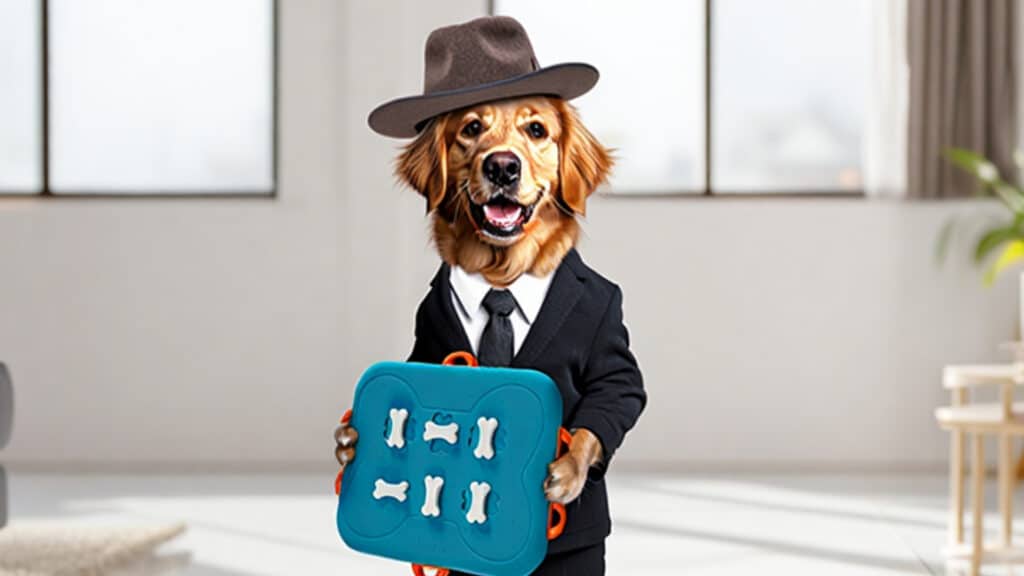Finding the perfect harness for your dog is important for both safety and comfort. A well-fitting harness stops your dog from slipping out, pulling too hard, or hurting themselves during walks.
But with so many sizes and styles, choosing the right one can feel confusing. That’s why using a size chart is so helpful.
By measuring your dog’s neck and chest, you can easily find the size that will fit them best, whether they are a tiny Chihuahua, a playful Beagle, or a large Labrador. In this guide, we’ll break down how to measure your dog.
Explain different harness styles and provide a simple chart for easy reference. With the right fit, your dog can enjoy walks safely, comfortably, and happily every time.
Why Choosing the Right Harness Size Matters
Choosing the right harness size for your dog is crucial for ensuring comfort, safety, and control. A well-fitted harness keeps your dog secure without being too tight or too loose.
If the harness is too small, it can cause pain, chafing, or even make it hard for your dog to breathe. If it’s too big, your dog might slip out, or the harness may move around and cause rubbing.
The right fit helps you guide your dog gently and gives you better control during walks or training sessions. Always measure your dog’s chest and neck before buying a harness to find the best size.
A properly fitted harness keeps your dog happy, safe, and ready for every fun tale!
How to Measure Your Dog for a Harness

Determining the correct harness size begins with taking accurate measurements. Using a soft measuring tape and following a few simple steps ensures your dog’s comfort and safety. Visual guides or diagrams make it easier to measure the neck and chest girth accurately without guesswork.
Here’s a step-by-step guide to help you measure your dog perfectly.
Step 1 – Measure Your Dog’s Neck Girth
Wrap a soft measuring tape around the widest part of your dog’s neck, usually just above the shoulders. Ensure the tape is snug but not too tight, leaving enough space for two fingers to fit between the tape and your dog’s skin. This ensures comfort and prevents chafing. Take note of the measurement in inches or centimeters, as most harness size charts reference both units.
Step 2 – Measure Your Dog’s Chest Girth
Place the measuring tape around the widest part of your dog’s chest, typically right behind the front legs. Ensure the tape goes around the full circumference and is snug but not restrictive. Your dog should be standing naturally to get an accurate measurement. Record this number carefully; the chest girth is the most important measurement when choosing a harness size.
Step 3 – Measure Your Dog’s Length (Optional)
Some harness styles, like step-in or body harnesses, also require the length from your dog’s neck to the base of the tail. Have your dog stand straight and measure along the back. This helps ensure the harness doesn’t rub or restrict movement. Length measurement is especially useful for long-backed breeds like Dachshunds or Corgis to avoid uncomfortable harness pressure.
Step 4 – Double-Check Measurements
Always measure twice to avoid errors, especially if your dog is wiggly. Compare your numbers with the harness size chart to pick the best fit. Double-checking prevents ordering a harness that’s too tight or too loose. If your dog is between sizes, it’s usually safer to size up for comfort and adjust straps as needed.
Common Mistakes When Choosing a Harness Size
Choosing the right harness size can be challenging, and even slight errors can make your dog uncomfortable or compromise safety. Avoid these common pitfalls to ensure your pup stays happy and secure during walks.
- Skipping measurements: Relying on breed or weight alone can lead to a poor fit. Always measure neck and chest girth.
- Choosing a harness that’s too tight: A harness that’s too snug can cause chafing, restrict movement, and make breathing uncomfortable.
- Choosing too loose: A loose harness may slip off, allowing your dog to escape or get tangled.
- Ignoring harness style: Different designs fit differently; back-clip and front-clip harnesses may require slightly different measurements.
- Not accounting for growth: Puppies or dogs gaining weight may outgrow a harness quickly if you don’t check regularly.
Taking time to measure accurately and consider these factors ensures the harness fits safely and comfortably.
Dog Harness Size Chart by Weight and Girth

Finding the right harness size helps your dog stay comfortable, safe, and easy to control. Use this simple size chart to match your dog’s neck and chest measurements with the correct harness size.
| Size | Neck Girth (in/cm) | Chest Girth (in/cm) | Suitable Breeds |
|---|---|---|---|
| XS | 9–12 in (23–30 cm) | 12–16 in (30–40 cm) | Chihuahua, Yorkie |
| S | 11–14 in (28–36 cm) | 16–20 in (40–50 cm) | Pug, Dachshund |
| M | 13–17 in (33–43 cm) | 20–26 in (50–66 cm) | Beagle, Cocker Spaniel |
| L | 16–22 in (40–56 cm) | 26–32 in (66–81 cm) | Border Collie, Boxer |
| XL | 20–28 in (51–71 cm) | 32–42 in (81–107 cm) | Labrador, Golden Retriever |
Use this chart as a guide, but always measure your dog carefully for the best fit.
Breed-Specific Harness Sizing Guide
Choosing the right harness for your dog isn’t just about measurements-it also helps to consider your dog’s breed. Different breeds have distinct body shapes, so a harness that fits one breed perfectly may not be suitable for another.
Here’s a simple breed-specific guide to help you pick the best size and style:
- Small breeds: French Bulldog, Shih Tzu, Pomeranian-usually XS or S harnesses. Look for lightweight, padded options for comfort.
- Medium breeds: Border Collie, Beagle, Cocker Spaniel-usually S or M harnesses. Balanced support and adjustable straps are most effective.
- Large breeds: German Shepherd, Golden Retriever, Boxer-usually L or XL harnesses. Sturdy and durable designs are ideal.
- Giant breeds: Great Dane, Mastiff, Saint Bernard-usually XL or XXL harnesses. Reinforced materials provide extra safety and control.
Using a breed-specific approach ensures your dog stays comfortable, safe, and ready for every walk.
Puppy vs Adult Dog Harness Sizing Tips
Choosing a harness for a puppy differs from selecting one for an adult dog. Here’s a quick guide to help you pick the right harness based on age and growth considerations:
| Dog Type | Sizing Tip | Key Considerations |
|---|---|---|
| Puppy | Measure monthly and choose adjustable harnesses | Look for fully adjustable straps to accommodate rapid growth; avoid harnesses that are too tight. |
| Adult | Measure once and pick a size that fits comfortably | Focus on the chest girth; the harness should allow for two fingers’ worth of space for comfort. |
| Both | Double-check measurements | Ensure a snug fit without restricting movement; check straps regularly for wear and adjustments. |
By following these tips, you can ensure a safe, comfortable fit for dogs at any life stage, reducing the need for frequent replacements.
Different Types of Dog Harnesses and Their Fit
Choosing the right type of harness affects both your dog’s comfort and fit. Step-in harnesses are easy to use because your dog simply steps into them, and you buckle it on their back.
Over-the-head harnesses go over your dog’s head and fasten around the chest, offering a more secure fit for active dogs.
There are also no-pull harnesses, which gently redirect your dog to prevent pulling during walks. Back-clip harnesses attach the leash to the back, making them ideal for calm walks, while front-clip harnesses attach at the chest to give you more control and reduce pulling.
Each style may require slight size adjustments, so always measure your dog carefully to ensure the best fit and comfort.
Harness Fit Tips and Common Sizing Issues
Making sure your dog’s harness fits correctly is key to their safety and comfort. A proper fit prevents chafing, slipping, and breathing problems while giving you better control during walks. Here are some helpful tips and common sizing issues to watch for:
- Two-finger rule: You should be able to slide two fingers comfortably between the harness and your dog’s body. This ensures it’s snug but not too tight.
- Too tight: Signs include difficulty breathing, red marks, or restricted movement.
- Too loose: The harness may slip over the head or rub the skin, causing sores.
- Adjust straps: Use adjustable straps to secure a comfortable fit without pinching or sagging.
Checking and adjusting your dog’s harness regularly keeps walks safe, comfortable, and enjoyable.
Conclusion
Want to make sure your dog’s harness is always just right? Getting the perfect fit isn’t a one-time thing-it takes a little attention and care.
Start by rechecking measurements every few months, especially if your dog is growing or gaining weight. For puppies, remember they can grow quickly, so plan for a little extra room in the harness.
Whenever possible, try the harness on before buying to see how it sits on your dog and make any adjustments. Always prioritize comfort over looks-a stylish harness isn’t worth it if it pinches or rubs your dog.
By paying attention to fit, adjusting straps, and checking sizes regularly, you can keep your furry friend safe, happy, and ready for fun walks every day.








